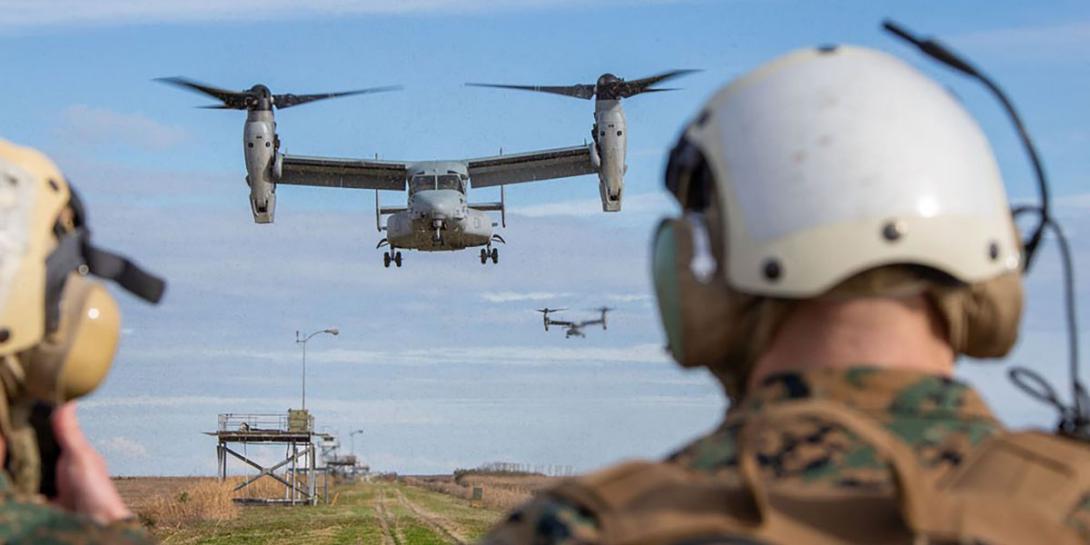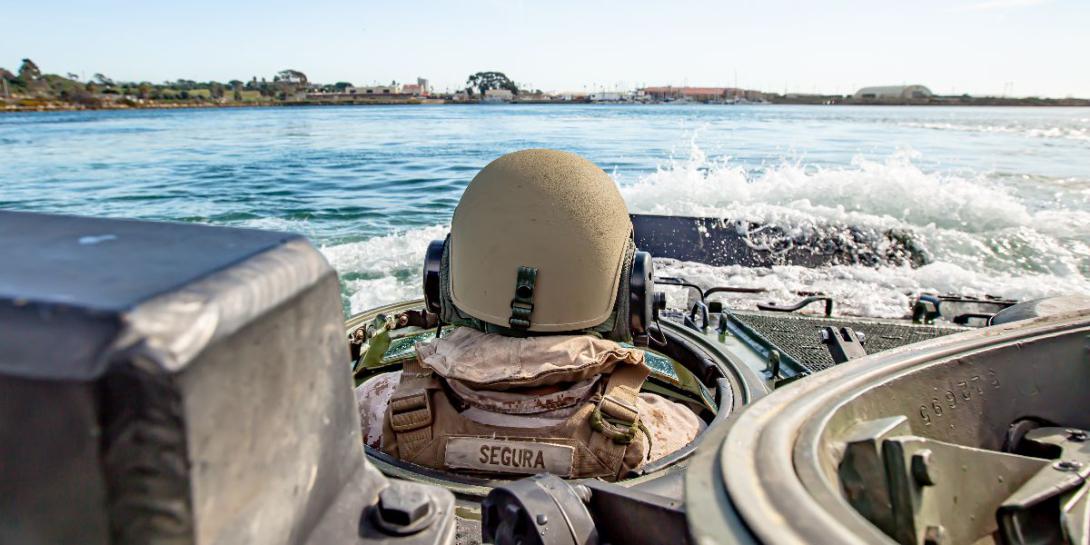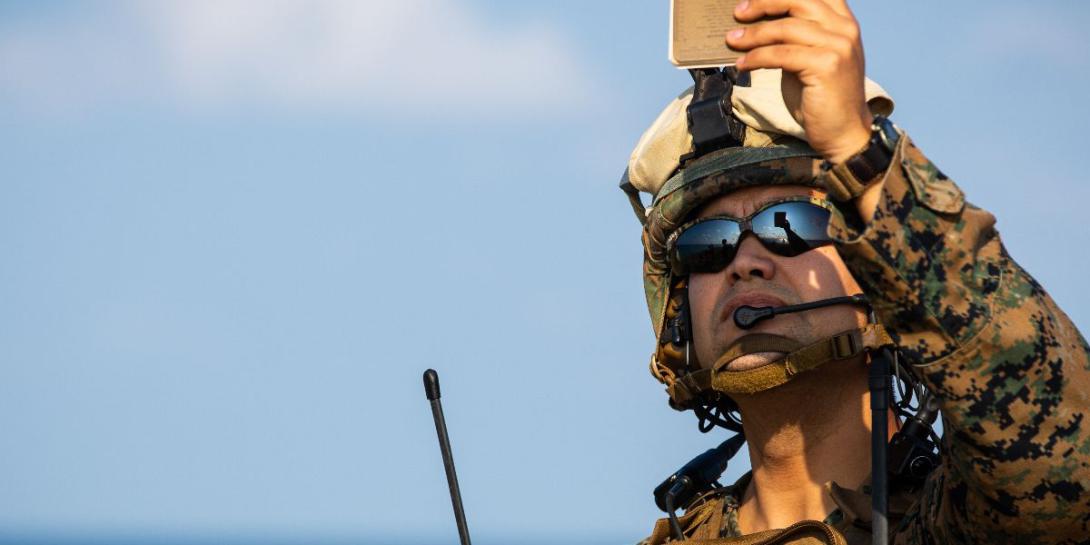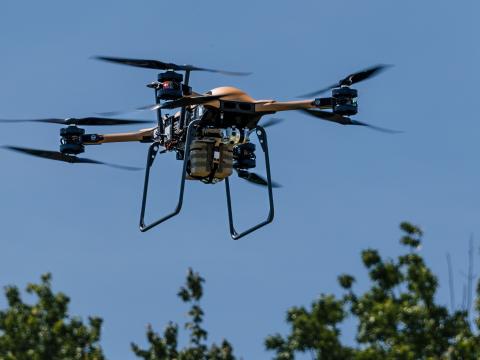Aligning the Marine Corps Warfighting Lab's Vision
This year, the number one priority of the U.S. Marine Corps Warfighting Laboratory’s leadership is to prepare a comprehensive recommendation to the service’s commandant, Gen. David Berger, USMC, on the future infantry battalion construct. This encompassing task is needed to properly align aspects of the Marine Corps to succeed in a near-peer environment as a more integrated part of the U.S. Navy, and one that is more operational with joint partners and allies. The lab’s other priorities center around solutions needed to execute peer adversary warfare.
“The infantry battalion is the foundational warfighting component within the Marine Corps,” explains Brig. Gen. Benjamin Watson, USMC, commanding general, Marine Corps Warfighting Laboratory and vice chief, Futures Directorate, Office of Naval Research. “It’s foundational, not just to things like the Marine Expeditionary Units but also to the future Marine Littoral Regiment and to really all of our Marine Air-Ground Task Forces. The commandant directed that we develop an organization consistent with the future operating environment, a future infantry battalion that was more capable of operating in a distributed fashion in a contested maritime environment.”
Gen. Watson emphasizes that this task of defining what the future infantry battalion should look like also has to include a clear examination of the various dependencies and repercussions. “There are all kinds of second-order impacts of that guidance,” he says. “It’s not just organizational design and then capability investments, but it’s command and control, and ‘what type of Marine do you need.’ And it is how you modify the organization to enable decision making at a smaller level, to make sure that you have an adequate PACE—primary, alternate, contingency, emergency—communications plan so that if space is denied or degraded, what are your backup and then your tertiary options for maintaining communications within the context of a naval and joint force with a relatively small unit level deploying forward.”
The Marines have been experimenting with future infantry battalion construct and have developed “a couple of different designs” over the last year and a half, the lab’s commanding general offers. He expects their recommendations to come later this year.
“We’ve taken a look at, ‘What do you need to do with the infantry battalion?’ that has done so well for so long in order to make it more capable of operating in smaller units, distributed across a broader area and have effects at distance, both in terms of their ability to sense and their ability to provide effects against an adversary,” Gen. Watson says.
He explains that this broader force structure evolution will bring about a different kind of Marine distinct from the traditional Marine Expeditionary Units, or MEUs, expeditionary quick reaction forces that are deployed for humanitarian assistance, disaster response or crucial combat missions. Instead, this new type of Marine will specialize in near-peer warfighting. They will contribute to sea denial and enable joint force access and targeting if adversarial conditions worsen.
“The MEU is designed specifically to be able to forward operate across a really broad range of capability areas and from traditional L-Class ship platforms,” Gen. Watson notes. “The force that we are talking about now is one that will be enabled by smaller littoral maneuver platforms, such as the light amphibious warships currently in development and smaller surface craft—although they would not be fundamentally tied to those. They would operate in a much lower signature fashion than your traditional MEU and be specifically focused on peer adversaries. [They would] not be operating and not necessarily be developed as sort of a ‘Swiss Army knife’ capability that could do everything from humanitarian assistance and disaster response all the way up to high-end conflict as required. The [new] stand-in force that we’re talking about out in the Western Pacific, and has application globally, would be one that is specifically designed to operate and persist inside a highly contested environment, what we call the adversaries’ weapons engagement zone. [They] would contribute to sea denial and then be able to specifically enable joint force access and targeting, if things escalate.”
Meanwhile, the present-day MEUs will steadfastly remain an “essential part of the Marine Corps value proposition to the nation as being the global crisis response force,” the general clarifies.
In addition, the lab’s commanding general expects the Marines to start experimenting soon with their new Marine Littoral Regiment (MLR) concept, the specific, purpose-built organization they are designing to execute expeditionary, advanced base operations.
“It’s based off taking a traditional regiment of several thousand Marines, shrinking it in size and focusing it on purpose to be able to execute expeditionary, advanced base operations and to operate with and provide enabling capabilities, both lethal and nonlethal, to the Navy and the joint force within that contested maritime environment,” Gen. Watson offers.
The first of three planned MLRs is standing up in Hawaii. It will be called MLR III and be under the III Marine Expeditionary Force (MEF) in Marine Corps Forces, Pacific. The leaders intend MLR III to become the basis for the service’s experimentation over the next couple of years for not only refining the Marines’ concept of expeditionary, advanced base operations, but also for fine-tuning its own designs.
“It’s to look at the way we build this organization, bring it out through live-force experimentation and then make the adjustments in both organizational design and capability investments to get the next one, two or three MLRs right,” the general stresses. “We’ve been building it for some time, so it’s just a question of when we officially say it is operationally capable.”
As for other focus areas for the lab, Gen. Watson identified as priorities any solutions that support operations in contested maritime locations.
“In terms of capability investments, a couple of our hardest problems that the commandant has us focused on is logistics in contested maritime spaces,” he shares. “It’s operating over the kind of distances and the very challenging operational environments—maritime, saltwater, tough weather—and close competitive space relative to the adversary. And it’s how do we deal with the kind of sustainment and distribution challenges in that kind of a contested environment over those kinds of distances.”
Here, autonomous systems will play a key role. “That leads us in almost all areas toward greater degrees of autonomy, weaving in artificial intelligence and how to maximize the ability to reduce decision times. It is a future operating environment that’s characterized by ubiquitous sensing and unmanned systems.”
And to support maneuver forces, the lab will need to focus on capabilities that improve the persistence of the stand-in forces within that contested environment so close to the adversary.
“Contested maritime space really mandates from our perspective that we operate in increasingly small, distributed, mobile, low-signature units,” Gen. Watson explains. “The ability to move quickly and regularly is an inherent part of how we see that force being able to persist for extended periods in the kind of sensing environment that they’re going to face.”
Furthermore, in considering how to support the Marine Corps’ ability to enable naval and joint force operations, the Maine Corps Warfighting Lab is examining advanced reconnaissance and counter-reconnaissance capabilities.
“The Marine Corps is not going to win a war against a peer adversary by itself,” Gen. Watson stipulates. “And so, our success is in our ability to enable the Navy and the joint force. One of the ways in which we can do that, based on our persistent forward presence as a stand-in force, close to the adversary, is by further developing this concept of reconnaissance and counter-reconnaissance. Practically, the way we talk about it is, ‘How do we sense and make sense of the contested environment relative to an adversary and then how do we deny that adversary the ability to do the same?’ That has implications for how you operate and all the capabilities you invest in for the service. That is a significant part of what we are continuing to develop in terms of the Marine Corps’ value proposition to the joint force.”
And the biggest challenge with that is form factor.
“If we are going to stay and persist in that contested environment in small units for an extended period against an adversary, then we’ve got to stay small and highly mobile and low signature, so we are looking for reconnaissance and counter-reconnaissance capabilities that fit in with that MO [modus operandi],” Gen. Watson suggests.
Examples of reconnaissance and counter-reconnaissance tools could be advanced unmanned aerial systems that can operate and communicate at the range needed—over the horizon—matching the kind of lethal systems they use, in a form factor that is acceptable.
“If I’ve got an anti-aircraft missile that can shoot 100 nautical miles, how do I get a complementary ability to send beyond that distance in a package so that I can operate forward in a low signature fashion without relying on satellite communications?” he asks. “With national technical means right now, you start to get into really big, heavy systems that require long runways. So, we are particularly interested in how do we increase it in relatively small packages without a lot of overhead.”
These types of operations do require a robust PACE plan, knowing upfront that Marines will be confronting a contested spectrum. “How do we develop a suite of capabilities that allow us to maintain assured communications and the ability to command and control at the lowest level possible while also providing that capability to the Navy and the joint force to enable their access?” the general ponders.
“It starts with access to national technical means, to satellite communications, and if those aren’t available, then how do we leverage at the small-unit level facilities for command and control and targeting.
Then there’s the aerial layer. In the event that space is denied and degraded, what are the capabilities at echelon? A good manifestation of this would be unmanned aerial systems or high-altitude balloons, things that we are investing in that would allow for the development of a persistent aerial layer that would not only enable our forces to communicate with themselves, but for our forces to communicate with the naval force and the joint force.”
Also necessary are terrestrial communication capabilities, such as enhanced high-frequency communications or free-space optics, which have the potential to be cross domain, offering ground-to-ground, ground-to-air or even ground-to-space communication capabilities. In addition, the lab is examining solutions that enable communications with subsurface forces and provide support to undersea warfare, with resilience and redundancy, Gen. Watson notes.
The future also calls for advanced analytics.
“The Marine Corps is trying to develop and expand our suite of tools of analysis, to be increasingly sophisticated not just in terms of their ability technically to provide us with good data upon which to make investment decisions, but to also make sure that along those lines we are operating at the right levels of classification, to make sure that we’re really making fully informed decisions when we invest,” he adds.
Overall, the Marine Corps Warfighting Lab’s concentration will continue to support the right organizational design and capability investment decisions necessary to realize the commandant’s vision to develop the appropriate 2030 Marine Corps force, Gen. Watson concludes.
“Broadly, all of the technologies that we are focused on need to fall within do they help us to enable joint force access and joint force targeting, and then, are they consistent with our focus on naval integration, becoming more and more integrated with our sister service as part of a naval expeditionary stand-in force.”






Comments